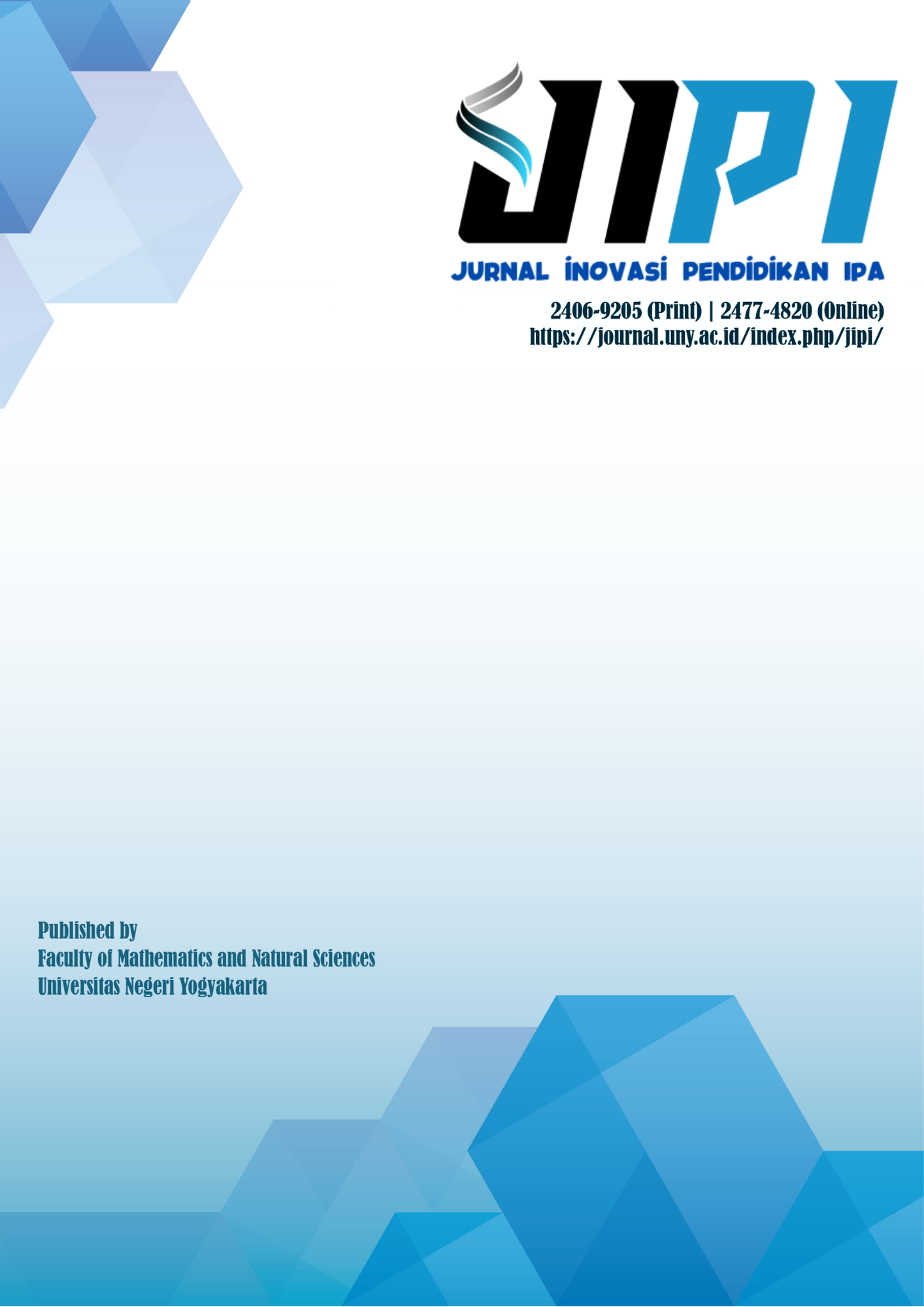Distance Learning Design: A Problem-Based Learning with Flipped Classroom Model through improving student learning outcomes and learning motivation
DOI:
https://doi.org/10.21831/jipi.v9i2.63166Keywords:
Learning Design, Flipped Classroom, Cognitive, PBL, MotivationAbstract
References
Abuhammad, S. (2020). Barriers to distance learning during the COVID-19 outbreak: A qualitative review from parents' perspective. Heliyon, 6(11), e05482. Https://doi.org/10.1016/j.heliyon.2020.e05482
Amiroh. (2013). Mari Beralih Ke Flipped Classroom.[Online] Tersedia Di Http://Amiroh.Web.Id/Mari-Beralih-Ke-Flipped-Classroom/. Diakses Pada 1 November 2021
Arum, R., & Stevens, M. L. (2020, March 18). What Is a College Education in the Time of Coronavirus? The New York Times. Https://www.nytimes.com/2020/03/18/opinion/college-education-coronavirus.html
Baker,. J.W. (2000). The "classroom flip": Using web course management tools to become the guide by the side. In J.A.
Cutri, R. M., & Mena, J. (2020). A critical reconceptualization of faculty readiness for online teaching. Distance Education, 41(3), 361–380. Https://doi.org/10.1080/01587919.2020.1763167
Djamarah, S., B. & Zain, A. (2002). Strategi Belajar Mengajar. Jakarta : PT Rineka Cipta.
Eom, S. (2013). Testing the Seddon Model of Information System Success in an E-Learning Context: Implications for Evaluating DSS. In J. E. Hernández, S. Liu, B. DelibaÅ¡ić, P. Zaraté, F. Dargam, & R. Ribeiro (Eds.), Decision Support Systems II - Recent Developments Applied to DSS Network Environments (pp. 19–33). Springer. Https://doi.org/10.1007/978-3-642-41077-2_2
Gay, G. H. E. (2016). An assessment of online instructor e-learning readiness before, during, and after course delivery. Journal of Computing in Higher Education, 28(2), 199–220. Https://doi.org/10.1007/s12528-016-9115-z
Hechinger, J., & Lorin, J. (2020, March 19). Coronavirus Forces $600 Billion Higher Education Industry Online. Bloombergquint. Https://www.bloombergquint.com/businessweek/colleges-are-going-online-because-of-the-coronavirus
Hidayati, N., Leny., Iriani, R. (2018). Pengaruh Model Pembelajaran Inquiry Based Learning Dengan Pendekatan Flipped Classroom Terhadap Self Efficacy Dan Hasil Belajar Kesetimbangan Ion Dalam Larutan Garam. Banjarmasin: Universitas Lambung Mangkurat.
Johnson, Graham Brent. (2013). Student Perceptions Of The Flipped Classroom. Columbia: The University of British Columbia.
Karim, M & Saptono, S. (2020). Penerapan Flipped Learning Pada Pembelajaran Daring Efek Pandemi Covid-19 dalam Meningkatkan Motivasi Peserta Didik Man Salatiga Pada Materi Sel. Prosiding Seminar Nasional Pascasarjana UNNES 2020: ISSN: 2686 6404.
Khoiriyah U., C. Roberts, C. Jorm & C.P.M. V. Dvleuten. (2015). Enhancing students' learning in problem based learning: validation of a self-assessment scale for active learning and critical thinking. BMC Medical Education 15 (1): 1-8. DOI 10.1186/s12909-015-0422-2.
Lage, M.J., Platt, G.J., & Treglia, M. 2000. Inverting the classroom: A gateway to creating an inclusive learning environment. Journal of Economic Education, 31(1), 30–43
Mcgill, T., Klobas, J., & Renzi, S. (2011). LMS Use and Instructor Performance: The Role of Task-Technology Fit. International Journal on E-Learning, 10(1), 43–62.
Motaghian, H., Hassanzadeh, A., & Moghadam, D. K. (2013). Factors affecting university instructors' adoption of web-based learning systems: Case study of Iran. Computers & Education, 61, 158–167. Https://doi.org/10.1016/j.compedu.2012.09.016
Osman, M. E. (2020). Global impact of COVID-19 on education systems: The emergency remote teaching at Sultan Qaboos University. Journal of Education for Teaching, 1–9. Https://doi.org/10.1080/02607476.2020.1802583
Strayer, J.F. (2012). How learning in an inverted classroom influences cooperation, innovation and task orientation. Learning Environments Research, 15(2), 171–193. Doi:10.1007/s10984-012-9108-4.
Subramaniam. (2006). Problem-based learning: Concept, theories, effectiveness and application to radiology teaching Radiology. Waikato Clinical School University of Auckland: Hamilton New Zealand.
Suhardi, D. (2020). Flipped Classroom Model: Solusi bagi Pembelajarna Darurat Covid-19. Https://www.kemdikbud.go.id/main/blog/2020/07/flipped-classroom-model-solusi-bagi-pembelajaran-darurat-covid19. Diakses 08 Maret 2021.
Supratiknya dan Titik Kristiyani. (2006). Efektifitas Metode Problem-Based Learning dalam Pembelajaran Mata Kuliah Teori Psikologi Kepribadian II. Jurnal Psikologi. Fakultas Psikologi UGM. Vol. 33 (1). 17 – 31.
Zadulqisti, E. (2010). Problem Base Learning (Konsep Ideal Model Pembelajaran untuk Peningkatan Prestasi dan Motivasi Belajar).Forum Tarbiyah 8(2):181-291.
Downloads
Published
How to Cite
Issue
Section
Citation Check
License
The authors submitting a manuscript to this journal agree that, if accepted for publication, copyright publishing of the submission shall be assigned to Jurnal Inovasi Pendidikan IPA (JIPI). However, even though the journal asks for a copyright transfer, the authors retain (or are granted back) significant scholarly rights.
Jurnal Inovasi Pendidikan IPA by http://journal.uny.ac.id/index.php/jipi/index is licensed under a Creative Commons Attribution-ShareAlike 4.0 International License.










